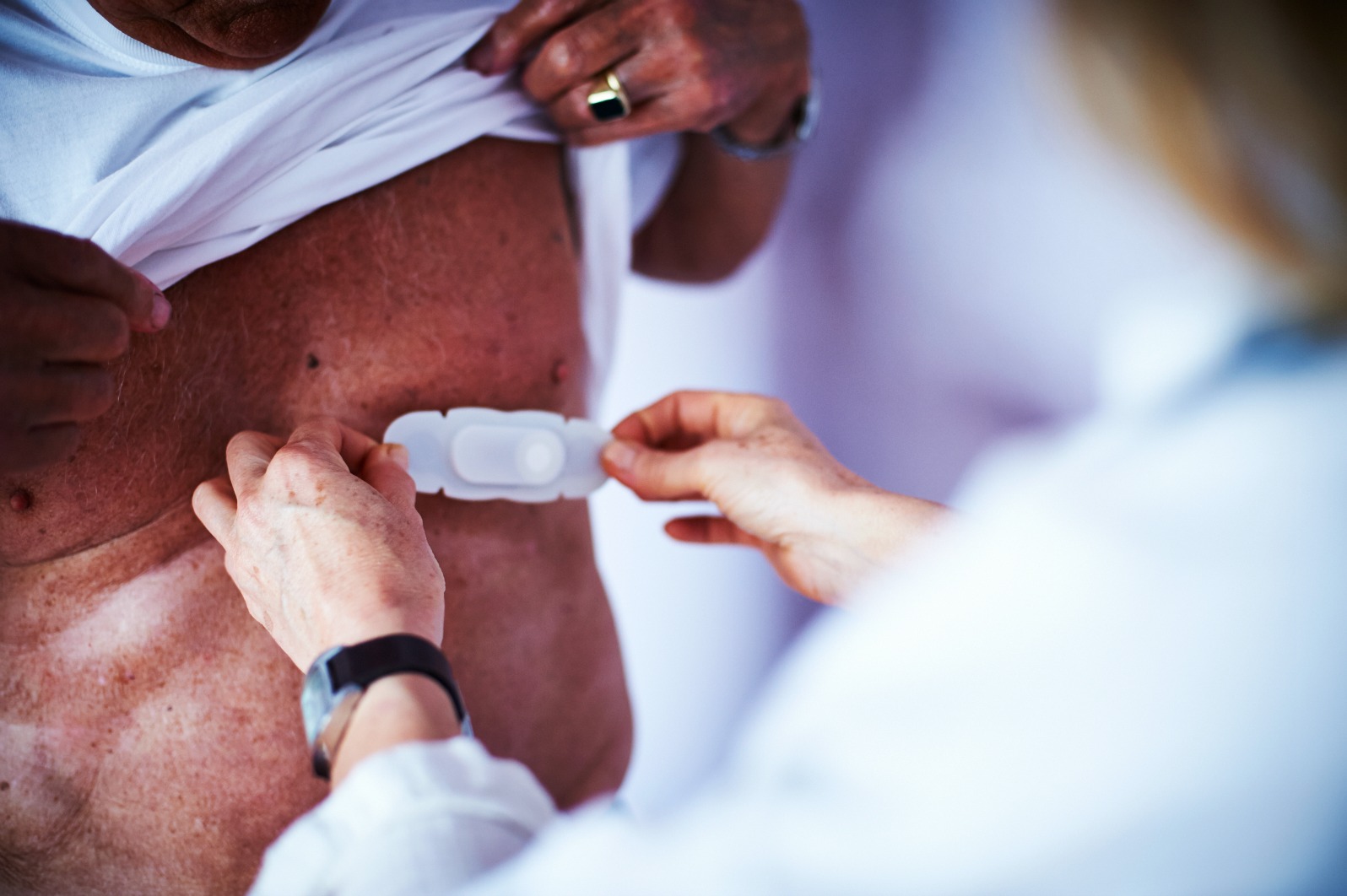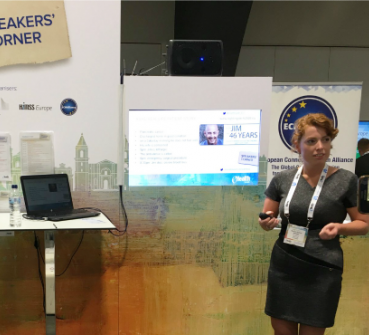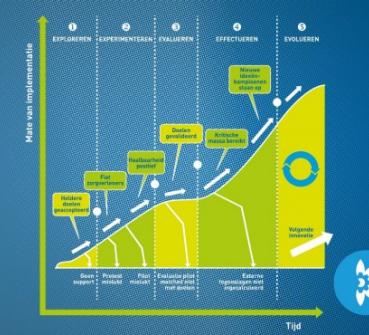Scientific research on wearables, cVitals and patient safety
More than a year ago, I stepped into Daan Dohmen’s room as a brand-new Technical Physician, for a first introduction. When I walked out one hour later, I was a little perplexed by the positive vibes and I was smiling, thinking of the ideas that he sketched out. Now, one year later, I examine which technologies will really and permanently improve our care.
I have one foot in the world of advanced technology for home care and the other in hospitals, with patients and doctors, to perform medical research. For me, that’s a perfect combination, as I can immediately test ideas in practice.
Increasing patient safety
I love to apply the best technical innovations to increase patient safety. And especially if I can do it in such a way that the patient really feels he’s been helped. And the good news is, all these technical innovations are already accessible. But it’s not necessarily about developing technology, rather about how to apply it in practice.
‘It’s not necessarily about developing technology, rather about how to apply it in practice’
Which wearables can we really trust?
As a Product Researcher at FocusCura, I test the ever-expanding market of ‘wearables’ (self measuring devices). Think for instance of the clever plasters, which measure vital values. Which wearables are the most user-friendly and reliable? Measuring a reliable value for healthy people doesn’t necessarily mean we can trust the device for patients. The answers are near!
I also research the effects of cVitals for patients. What is the impact of cVitals when it comes to quality of life and disease burden? Does it contribute to self management and empowerment of patients? And if it does, to what extent? What is the effect on the care consumption, number of hospital (re)admissions, consultations of specialists – and what are the costs and revenues?
Promotion research: A Safe Care Pathway from ICU to Home
In addition to being a Product Researcher, I am also conducting a cool promotion research in collaboration with Daan Dohmen (FocusCura’s CEO), professor Kalkman (anesthetist) and Dr. Blokhuis (trauma surgeon) of the UMC Utrecht.
During my promotion, patient safety of ‘Hospital to Home’ is our main focus. How can we improve the surveillance of high risk patients of the Intensive Care department, via the nursing ward to the first weeks at home after being discharged from hospital, thanks to wearables and remote monitoring techniques (telemedicine)?
‘There is a lot to be gained, especially if you think of all the patients in the nursing ward, often left on their own for hours in between the nurse’s checks’There is a lot to be gained, especially if you think of all the patients in the nursing ward, often left on their own for hours in between the nurse’s checks. Let alone when patients are discharged after major abdominal surgery and vital functions are no longer monitored. Weird, don't you think? It would be nice if we could detect these patients’ deterioration in time, using wireless remote monitoring techniques, in order to prevent worsening, complications and unplanned hospital admissions.
When will the care industry reap the benefits?
Actually applying new e-Health applications is sometimes rather difficult. The care industry is so complicated and fragmented that new developments hardly ever get a chance to break through. Even though many other sectors already use the strength of fast, durable, technological solutions.
The care industry should also be able to reap the benefits of this technological progress. That is what I am going to strive for. I’m also very curious to know your experience in the field of telemonitoring. Do let me know through social media or whenever we meet.
Keep you posted!



